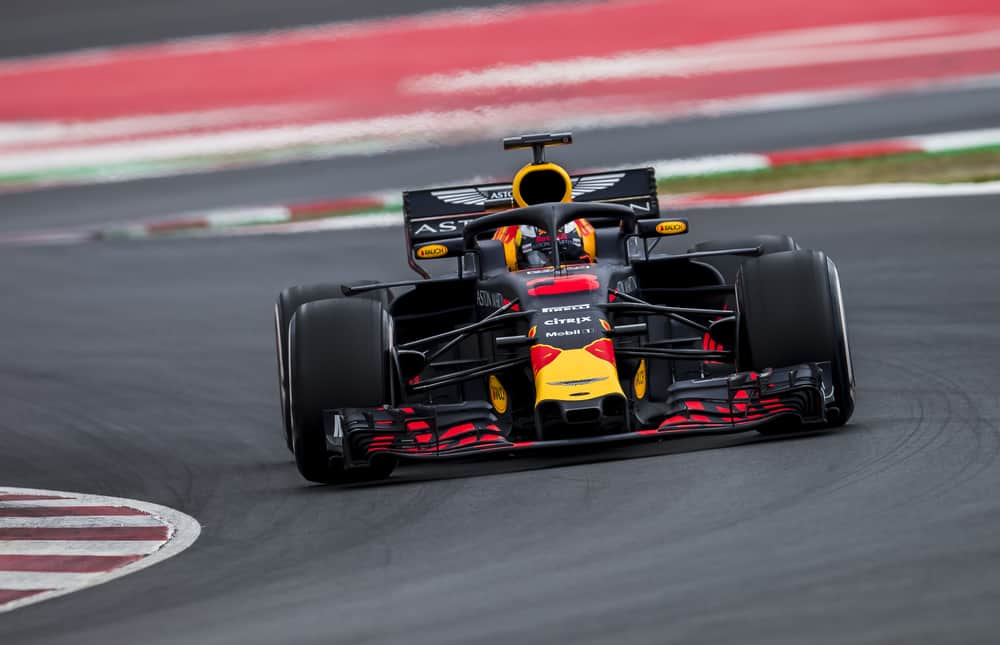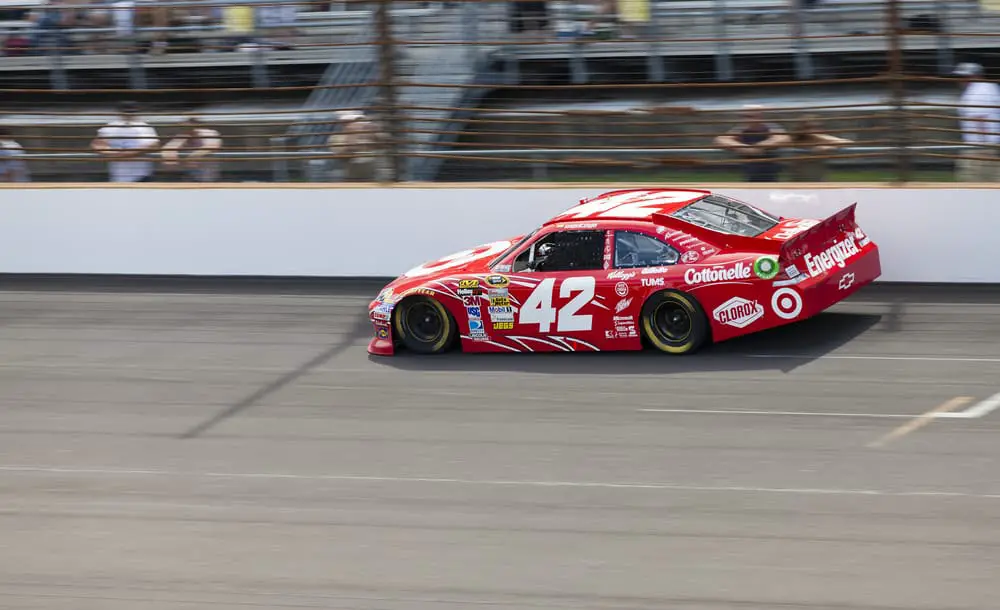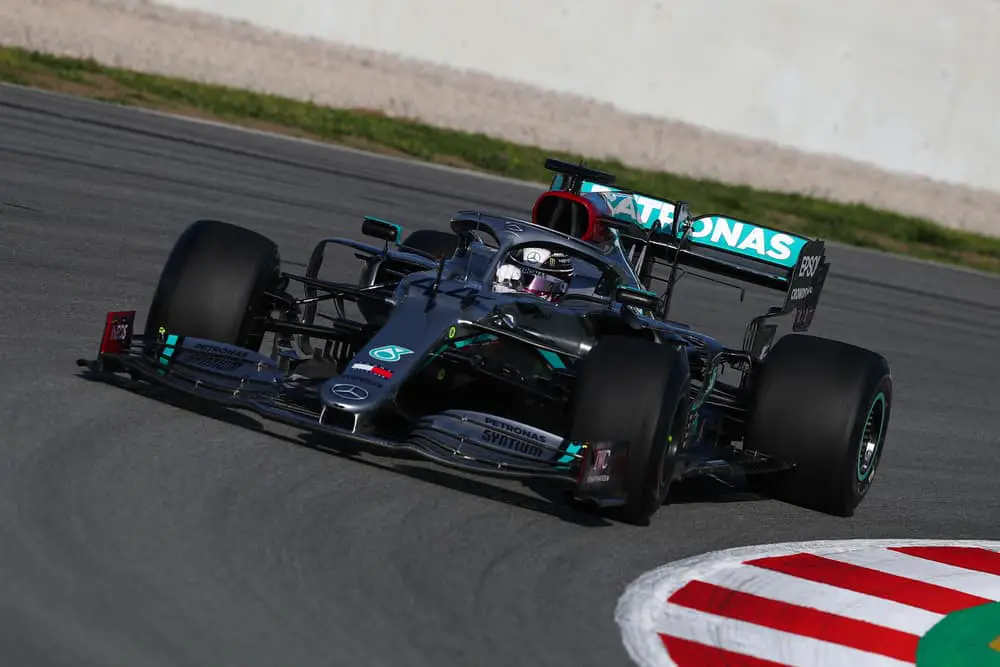When attending a NASCAR or Formula 1 race, you can expect adrenaline-pumping speeds as the drivers battle for a place, tires screeching as they roar around the corners.
Key Points:
- Formula 1 cars are faster than NASCAR cars, with top speeds of up to 235 miles per hour compared to NASCAR’s 212 miles per hour.
- The design of F1 cars is more advanced and futuristic, with each team manufacturing its own race car’s components in-house.
- NASCAR prioritizes the driver’s role in the car’s overall performance and race outcome, while Formula 1 revolves around building the fastest rigs with cutting-edge technology to separate themselves from the pack through marginal gains.
The excitement is nearly tangible, especially as the race nears its end and drivers push their cars to the limits in an attempt to secure first place.
But how fast do these cars actually go? Are the Formula 1 cars quicker, or would a NASCAR car beat them?
While Formula 1 cars are definitively faster, there’s more to the story than that, so stick around to learn more!
Can NASCAR Beat F1 Cars?
NASCAR and F1 races are known for their adrenaline-packed nature, keeping spectators on the edge of their seats. However, while NASCAR cars are fast, could they beat an F1 car?
In terms of outright speed, a NASCAR car falls short of an F1 car’s capabilities.
NASCAR Cars
If you’ve ever attended a NASCAR race, you’re probably familiar with the breakneck speeds cars maintain as they whirl around the course. But how fast do they actually go? In terms of outright speed, these cars are capable of top speeds of up to 212 miles per hour.
NASCAR cars can accelerate up to 62 miles per hour in a mere 3.5 seconds or up to 160 miles per hour in just 9 seconds. Compared to the average everyday car, these speeds are impressive, to say the least.
F1 Cars
While NASCAR cars are undoubtedly fast, F1 cars are even quicker. When drivers put the pedal to the metal and push F1 cars to their limits, they can easily achieve top speeds of a whopping 235 miles per hour. These cars can reach 200+ miles per hour in an impressive 9 seconds.
On top of that, they can go from a dead stop to 62 miles per hour in a mere 2.5 seconds. Talk about speed!
Why Are F1 Cars Faster Than NASCAR Cars?
F1 and NASCAR vehicles are designed for the sport of racing, with each required to meet strict, highly-regulated guidelines. But while they share the sport, the regulations of each type are far different, making each car look drastically different from the other.
While NASCAR prioritizes the driver’s role in the car’s overall performance and race outcome, Formula 1 revolves around building the fastest rigs with cutting-edge technology to separate themselves from the pack through marginal gains.
We see these differences reflected in the budgets and team sizes of each one. A typical NASCAR team works within around $7 million per season, with a $1.5 million car and about 100 people comprising the team.
Conversely, an average Formula 1 team has a much higher budget of around $300 million per season. Each car is worth around $9 million and has a team of over 1,000 people.
But why are F1 cars actually faster than NASCAR? Here’s why:
Design
The designs of an F1 car look drastically different from those of a NASCAR car. While both are clearly more advanced than everyday cars you see on the highway, NASCAR cars are closer in design to standard drivers than F1 rigs.
Every NASCAR is built on an identical chassis, featuring the same manual transmission, engine size, power output, and general design. The standardized essentials create a closer outcome, allowing drivers to showcase their skills and take the win.
On the other hand, Formula 1 cars look slightly alien, with a tapered design that almost seems futuristic. These designs have one goal in mind: speed. While NASCAR rigs are standardized, the designs of Formula 1 cars are closely guarded secrets, with each team manufacturing its own race car’s components in-house.
Each team has its own unique components, as the rules allow the team’s engineers to test the boundaries of regulations. However, they cannot overstep specific parameters, so there’s some consistency in that.
Since each team designs its own car, one team often dominates a race or season. This is often due to technical advantages and not always a reflection of the driver’s skills.
While both cars are built with aerodynamics in mind, the design of Formula 1 cars is honed explicitly for speed.
Power-To-Weight Ratio
When considering the speed capabilities of these cars, it’s essential to evaluate the power-to-weight ratio. Power alone isn’t enough to make NASCAR cars as quick as Formula 1 cars, as it comes down to their weight ratio.
The standard NASCAR engine produces approximately 750 hp, whereas Formula 1 cars produce a bit more, with 800 hp. In the grand scheme of things, the power production is relatively minor, so both cars should deliver similar speeds and acceleration figures.
But this is where the power-to-weight ratio comes in. As mentioned, Formula 1 cars are designed for speed, so they only weigh about half of a NASCAR car. The reduced weight of the design allows the Formula 1 car to achieve much higher speeds than a typical NASCAR car.
Acceleration and Deceleration
Formula 1 cars offer incredible acceleration and deceleration capabilities, with shockingly quick times on both. They can accelerate to 100 miles per hour from 0 mph and return to 0 in less than 5 seconds!
The impressive capabilities play a significant role in the car’s speed and handling as drivers maneuver around the track. The vehicle is designed to handle rapid acceleration and deceleration capabilities, as Formula 1 races are packed with sharp curves and turns that require quick braking and rapid acceleration.
While NASCAR drivers hurtle around the road and breakneck speeds, they don’t experience as much accelerative force, as there are fewer turns and little braking required.
Aerodynamics
In racing, aerodynamics is an essential consideration. Aerodynamics refers to the way the air passes over, under, and around the car as it moves, which impacts its performance and handling. The design of race cars is specifically intended to reduce drag and increase downforce as the driver maneuvers around the track.
While both cars employ the same principles to handle aerodynamics, how they go about it is much different. NASCAR utilizes aero technology that employs low and wide front spoilers, steep windscreens, and a wind tunnel-shaped body shell.
These designs help lower the car’s air resistance while improving its downforce for traction on the rear wheels, which aids with speed.
On the flip side, Formula 1 cars prioritize downforce for better traction as they take corners rather than reducing drag. Of course, both parts are essential, but Formula 1 cars shift the focus to traction. The downforce presses the car into the ground, ensuring it remains grounded through tight corners and abrupt speed changes.
Every single feature of the F1 car is honed to shape and channel air over, under, and around it to improve its aerodynamics.
Format
The layout and format of each race play vital roles in the overall performance of these cars. NASCAR races usually run for three or four hours, sometimes more, sometimes less. Drivers usually clock between 400 and 500 miles in each race, with hundreds of laps around the 1- or 2-mile course to complete the race.
NASCAR races feature an oval shape, with two or four left turns in each lap. This allows drivers to achieve and maintain high speeds, keeping brake use to a bare minimum. Drivers usually try to lap at approximately 200 miles per hour, maintaining high speeds to ensure the best results.
Conversely, Formula 1 drivers contend with winding curves throughout the track, with 22 corners per lap. These races are much shorter, requiring around 57 laps per race and less than two hours to complete. Drivers must be on the ball, precise, and skilled in braking and accelerating to control their vehicles through the winding curves of the track.
Given the nature of Formula 1 tracks, drivers usually go substantially slower as they corner the track throughout the race.
Frequently Asked Questions (FAQs)
Is Formula 1 The Fastest Motorsport?
While Formula 1 cars are the champion of speed in their sport, drag racing is technically the motorsport achieving the fastest speeds. In a drag race, cars achieve faster acceleration rates and top speeds than in a Formula 1 race.
The fastest drag cars can clock speeds of over 325 miles per hour, making them some of the fastest accelerating machines in the world.
Given the excessive amount of accelerative force drivers experience, drag races don’t last long and are usually over in a few seconds.




